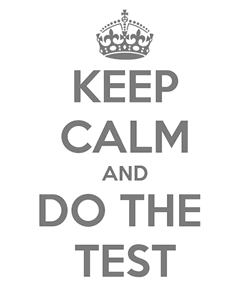Every enthusiast SEO professional dreams of the auspicious moment when he/she can dictate the volume of high-quality traffic to a particular website. This overarching aspiration has inspired many practitioners to come up with manipulative ideas that could highlight their website but only for a few moonlights. Google ultimately worked out on its algorithm, and those manipulative ideas ended up in being penalized for unethical practices. Despite several such experiments, one method to drive traffic has remained prevalent till date. That being, getting a high amount of quality links that point towards your website but in the right context. Especially after the Penguin and Hummingbird updates, it has become mandatory for link builders to pass Google’s guidelines, failing that would not serve your desired purpose.

Your content marketing strategy can benefit if you can appropriate the relevant links in your blog posts/web content. But before plunging into deep waters, let us understand the basic definitions first:
What are external links?
Any hyperlink that points towards a domain, apart from yours, is called an external link. E.g. if in this blog post, where our domain is https://www.searcheccentric.com/, when we insert a hyperlink for IT Chimes, then this is an external link to our page. The link may be inserted either in the text (such as inserting a link to the word) or embedding the link on an image. Clicking on an external link takes the user to the domain the link is pointing towards. In HTML format, links can be defined with the <a> tag. E.g. if we had to create a link for Wikipedia page, it would be
<a href=”https://en.wikipedia.org/wiki/Main_Page/”> Visit Wikipedia < /a>.
Similarly, if we had to use an image as a link, it could be done as below:
<a href=”default.asp”>
<img src=”searcheccentric.jpeg” alt=”Search Eccentric Image Link” style=”width:44px;height:44px;border:0″>
</a>
Key points: Use <a> to define a link, href attribute to define the link address. <img> element can be used inside the <a> definition to use an image as a link.
Now that the basic coding is understood, you can begin with your link-building campaigns. But wait, we can’t jump into deep waters until we know swimming well. Check out the following tips on how you can select the perfect method for your link-building campaigns:
Relevance of the links
Redundant links are a waste of your time. A good quality link is helpful but only when it has the right context attached to it. Google’s ranking principles state that your web page’s ranking is directly proportional to the usefulness and relevance it offers to the user’s search. So despite having big and reputed sites featuring your content or providing backlinks to your website, your sites will not gain at all if the keywords are not related to your business. Imagine a plastic toys seller retail company getting backlinks from some investment banker on the word “plastic money”.
Check List
- i) Ensure that your earned links are from sites in the same industry domain.
- ii) Even if the site does not directly relate to your genre or industry, it should at least relate in some way to your product or industry.
iii) Even the entirely unrelated links can be valuable provided the link above is about the receiving webpage’s content.
- iv) The earned links should have overall relevance, i.e.. Consistent with the web page’s content.
Pass the Google litmus test

Your link-building campaigns should not be violating any of the Google’s algorithmic protocols. Pay special heed to the things you should not do while building links.
We strongly recommend that you to avoid citing the content from other renowned and top websites verbatim only to drive traffic to your website. If you quote content from other websites, ensure that you have modified it by updating the borrowed content with recent data/figures. Also, verify that the borrowed content is at par and contextually relevant to your web page’s content. The key idea is to prevent the automated or manual “CTRL+C:: CTRL+V ” practice altogether so far content citation is concerned.
Additionally, you can build links by adopting the following time-tested methods:
- You should direct the backlinks to your web page that has a definite and expressed Call to action token. In fact, you can consider the highest linked page as landing pages to generate more leads and increase chances of deal closings.
- Consider embedding the offers in the content itself. If the content is graphical by nature, for example, an infographic, you can have the offer (backlink) preferably at the end of it.
- Guest blogging is a very effective method of link-building. Apart from uplifting your cross-linkings, guest bloggers do great when it comes to promoting the brand and create a long-lasting and influencing authority amongst followers.
- You can also initiate your link-exposure campaign periodically and participate in others’ similar programs. That will help you build a mutually benefiting relationship with many bloggers operating in your industry. You can also quote their statements (and they can quote yours) in your blog posts to build organic and authentic links.
- In case you do not have enough or bankable linkable assets, you can still propel your link-building aspirations by developing great quality content. A good and valuable content can be distributed through various means such as social media or by sending the tracking links to the email subscription lists, etc.
To add authenticity and a greater reliability to your content, link-building serves as a good instrument. Adhering to Google’s guidelines regarding this, we can take advantage of link-sharing in content distribution and driving traffic to our websites. However, too much of external links can divert the reader’s attention, or just annoy his mood. Insert the links to provide a better user-experience, without overdoing it. Contact us today to find out more about how our link building Services can help you.





